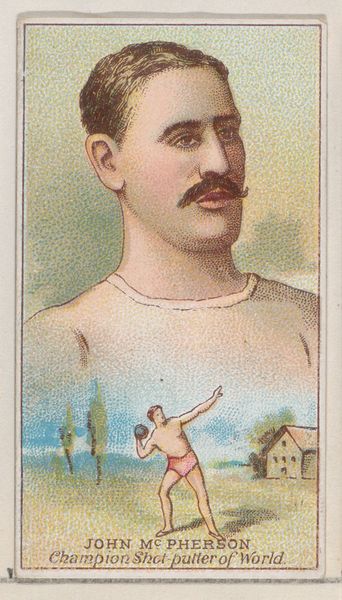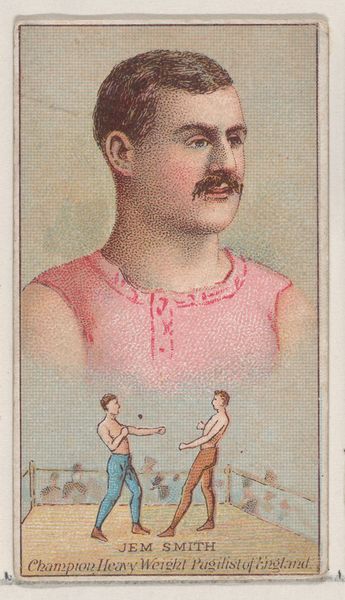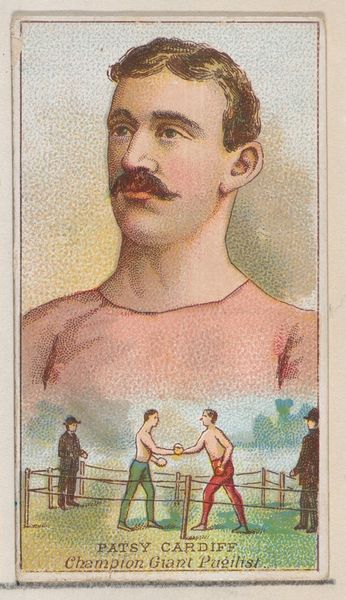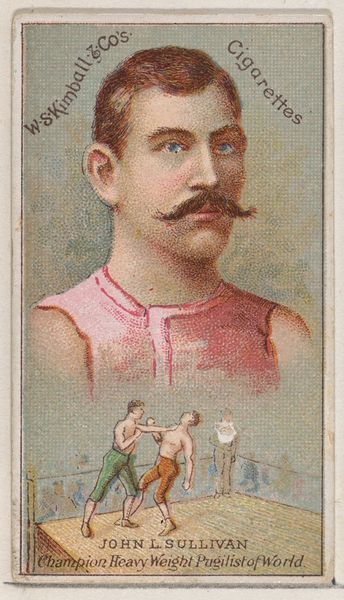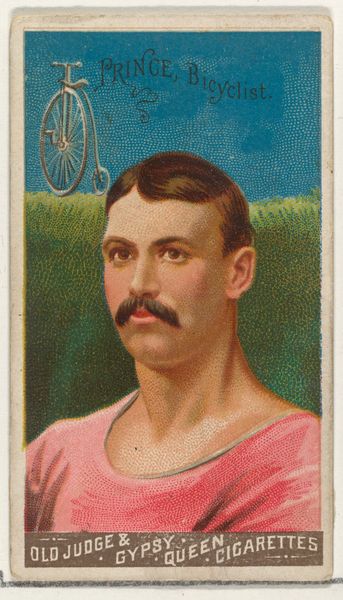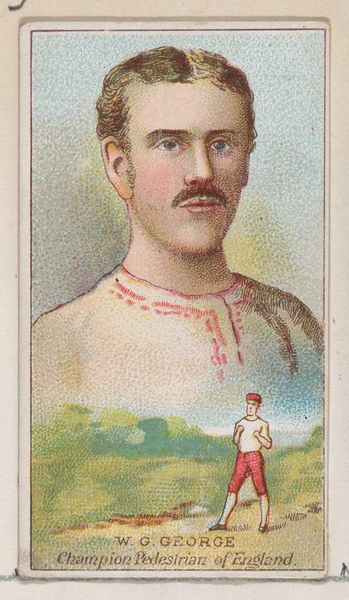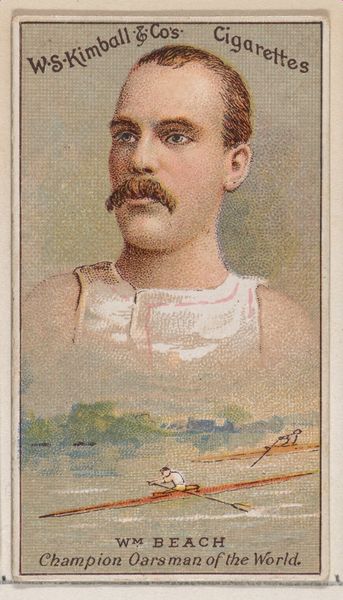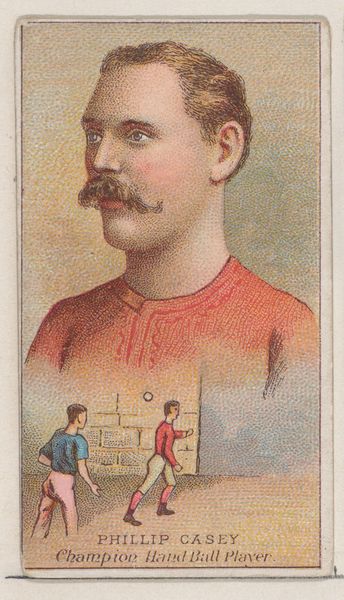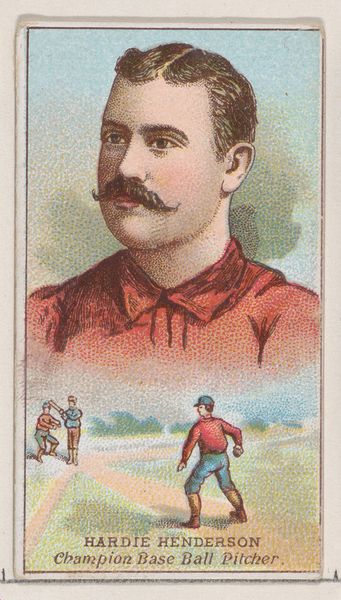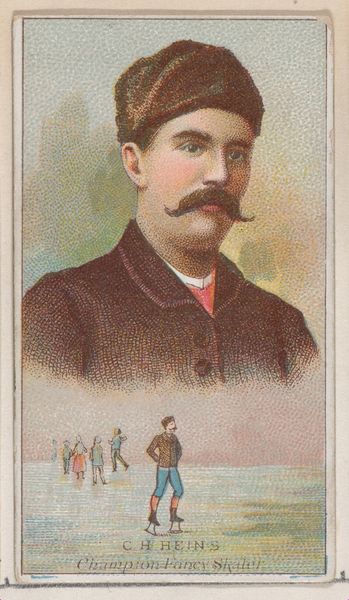
Edward Hanlan, Champion Sculler of America, from the Champions of Games and Sports series (N184, Type 1) issued by W.S. Kimball & Co. 1887
0:00
0:00
#
portrait
# print
#
figuration
#
coloured pencil
Dimensions: Sheet: 2 11/16 × 1 1/2 in. (6.8 × 3.8 cm)
Copyright: Public Domain
Curator: This is "Edward Hanlan, Champion Sculler of America," a print from 1887, part of the "Champions of Games and Sports" series by W.S. Kimball & Co. It's fascinating how it captures the burgeoning commercialization of sport through these collectible cards. Editor: My first thought is, what an interesting collision of textures and styles. The portrait has a real formality, almost academic, and that’s juxtaposed with the looser, impressionistic rendering of the rowing scene below. Curator: Exactly. The print utilizes color pencil techniques, almost mimicking pointillism, likely printed by lithography to maximize production. These cards were inserted into cigarette packs, a direct line connecting leisure, celebrity, and consumption. How are identities constructed through manufactured images, literally consumed as a commodity? Editor: That tension between high art portraiture and its commodified form speaks volumes. Looking closer, you notice that while celebrating Edward Hanlan's individual athleticism, this print contributes to the larger narrative of the idealized male athlete. The U.S. during this period grappled with rapidly evolving gender roles and ideologies around masculinity, and I think depictions of sports heroes were vital tools to negotiate that landscape. How does Hanlan, as a visible embodiment of strength and American achievement, reinforce certain social norms or challenge others? Curator: It’s tempting to idealize the image as solely reflective of prowess but we can't overlook the inherent biases. These kinds of depictions are almost always angled towards those already with social standing to maintain—mostly white, able-bodied men—with capital interest. What of the access and training needed to reach his champion status? The commodification obscures these socio-economic processes that facilitate certain achievements over others. Editor: And what about the laborers who made these prints? The conditions they toiled under versus the aspirational lifestyles being marketed? How do we account for that in our understanding? It raises crucial questions around labor conditions and class disparities. Curator: This really reframes how we consider production and manufacturing processes. Cigarettes being paired with idealized forms to essentially drive up capital and normalizing hazardous lifestyles. We might consider this card to function much like advertising then. Editor: Thinking about how the image functioned, or continues to function is key. Curator: Agreed. It’s more than a portrait; it's a complex social artifact with economic value. Editor: Definitely gives one plenty to consider.
Comments
No comments
Be the first to comment and join the conversation on the ultimate creative platform.
